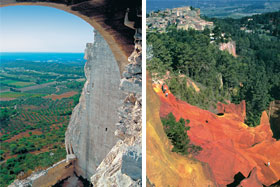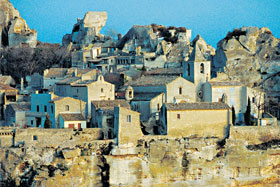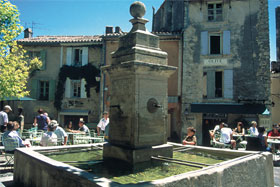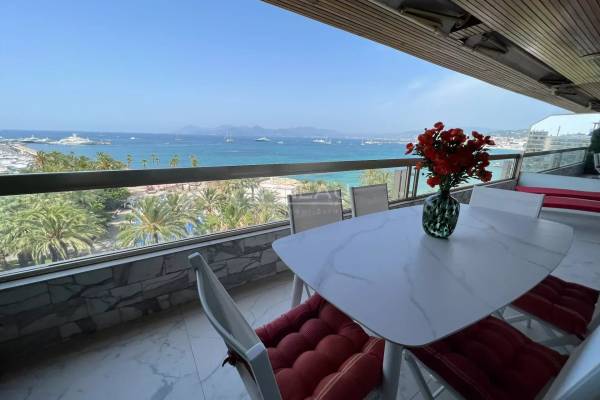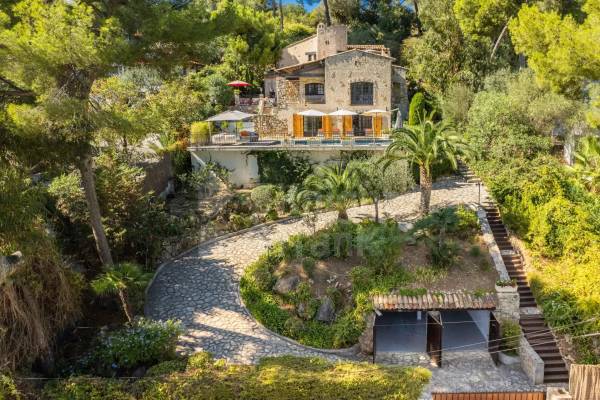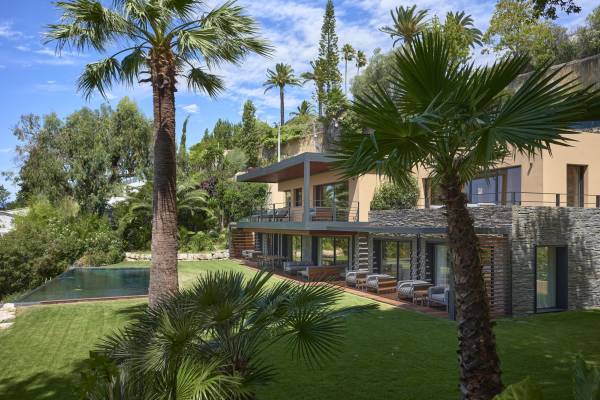The charm of Provence
For the past ten years, the Alpilles and the Luberon have had the wind in their sails. A trip to the heart of two authentic regions, where natural beauty and a rich past make for a delightful life-style…
For the past ten years, the Alpilles and the Luberon have had the wind in their sails. A trip to the heart of two authentic regions, where natural beauty and a rich past make for a delightful life-style…
A mountain range of almost 43,000 acres north-west of the Bouches-du-Rhône, the Alpilles region stretches over 25 km from the Rhône Valley to that of La Durance. A geological extension of the Alps and Luberon hills, they end in a stretch of market gardens just north of Saint-Rémy-de-Provence and melt into the plain of La Crau to the south. One often hears of the festivals and typical villages close to Avignon, Nîmes and Marseille. Undoubtedly one of the most visited, Les Baux-de-Provence rears up on a plateau 245 metres high overlooking Arles. With no less than 22 architectural items listed as Historic Monuments, it attracts tourists and strollers. Worth noting, the show at the Cathédrale d’Image, an audio-visual projection of images onto 4,000 m2 of rock walls. Renowned the world over, Saint-Rémy-de-Provence is always busy. And it’s not by chance that some people dare to compare it with the early Saint-Germain-des-Prés : here you’ll find painters, sculptors, composers, ceramists and makers of stained glass. Van Gogh spoke about the town’s “creative power and intensity”. Today, the commune invites visitors to discover his work in an itinerary of 21 panels in enamelled lava. Saint-Rémy is in fact a stage for many events : “Fête’Art” with its exhibitions and public happening ; the very European “Journées de la Peinture” ; and the “Marché des Créateurs”, which revolves around fashion, tableware, gastronomy, furniture and design. At the heart of the Alpilles, Eygalières basks amongst the vines and olive-trees, facing the mountain called La Caume and the Durance. Fans of hiking and cycling love this area. To the south, Maussane-les-Alpilles offers its fertile soil for the cultivation of olives. As does Mouriès, with its four AOC oils. These two communes share the top rung of the ladder for France’s production of olive-based products. At Mouriès, traditions are observed and homage is paid to the olive, “aïoli” and bulls (the bull-fighting arena seats 3,000 fans). Folklore is important and the parades of “Arlésiennes” are always a great success. In writing “Les Lettres de mon Moulin”, Alphonse Daudet contributed to the renown of Fontvieille. The proximity of Arles, Avignon, Les Baux and Saint-Rémy is certainly an advantage. When one asks about the reasons for all the enthusiasm, the mild climate and a quality life-style are the most frequent answers. The Alpilles is Provence viewed from the inside. Many personalities have holiday homes here. They adore the cuisine, colourful and inventive, fresh and full of taste. Even the wine, “Coteaux des Baux-de-Provence”, is part of the region’s saga of excellence. Hotels, restaurants and guest-houses rub shoulders with stone “mas” and exclusive properties. The region is lively all year round ; its agenda is dotted with festivals, including that of the Alpilles, devoted to world music of rural origin. Everywhere, one stumbles over the past : at Les Antiques, at Daudet’s Mill, or the Citadel at Les Baux.
More firmly anchored in time, the reputation of the Luberon derives from the beauty of its villages. From Manosque to Cavaillon, the Vaucluse to the Alpes-de-Haute-Provence, diversity is the key : cedar woods at Bonnieux, ochre cliffs at Roussillon, grottoes at Viens… Bonnieux is one of the most beautiful “perched” villages on the northern slopes. It surveys the agricultural plain known as the valley of Le Cavalon, the Vaucluse mountains and Le Ventoux. History comes in the form of its church, of both Romanesque and Gothic inspiration, the ruins of its towers and 13th-century ramparts. Finally, don’t miss its market on Fridays. On rounding a bend on a road with walls of flat stone, one discovers Gordes, built around a château dating back to 1031, and a church. Made of the stone from the rock on which it stands, this village has a highly specific kind of architecture. Certainly the most well-known site in the Luberon, it plays host to the “Festival des Pastorales”, votive fêtes and music festivals. Listed as an Historic Monument in 1977, the village of the “bories” is a collection of dwellings built of dry-stone. A style which goes back to the Bronze Age and lasted until the 18th century. Between Cavaillon and Apt, the old village of Goult with its drawbridge has opted for restoration in pure Provençal style. From the Place de la Madeleine, one can contemplate Gordes, Roussillon, Bonnieux, Lacoste and Ménerbes. Not to be missed : the cultural and arts-and-crafts events in August. Ménerbes is built on a rocky spur rather like a ship, home to some very old properties : Le Castellet, which once played host to Nicolas de Staël, La Carmejane, the Hôtel de Tingry and the residence of the Général d’Empire Robert, which later belonged to Picasso. Even today, artists, musicians and actors come together in the village praised by Nostradamus. “Who could not love Roussillon if he loves the light, colour, ardour, vast horizons and mineral peacefulness of the starry nights of southern France…” : this description by Marie Mauron says it all. The ochre colours share the limelight with houses built in the 17th and 18th centuries. The Saint John fête-day opens the round of events. Then there’s an absolute must, the International Festival of String Quartets. In the southern part of the Luberon, Lourmarin has original old fountains, Romanesque churches and houses with Renaissance façades. Outside the village, 16th and 18th century “bastides” are dotted around the countryside. In this same area, Cucuron is not solely dedicated to tourism, even though it extends a warm welcome with its 200 year-old plane-trees, pond and “Estivades”, a festival honouring the theatre, music and poetry. The Luberon’s philosophy lies in man’s close ties with the earth. Something one feels at Vaugines and Mirabeau, which became renowned as backcloths for the movies “Jean de Florette” and “Manon des Sources”. The massive stones from the region around Apt are excavated from the limestone hills. “Canal” tiles that can be seen at Cereste come from the clay. Finally, the existence of ochre deposits has given rise to several activities : painting, decoration, pottery and, of course, tourism. A National Park since 1977, the Luberon is working hard to restore its ancient sites, maintain its rivers and protect its fauna and flora. The northern part of the region, covered in oaks, is abrupt and full of ravines. The south, sheltered from the Mistral, offers vegetation more typically Mediterranean.
By Laetitia Rossi - photos : J.Guillard/CDT13 - D.Lefranc/coll. CDT Vaucluse - N. et F. Michel.
